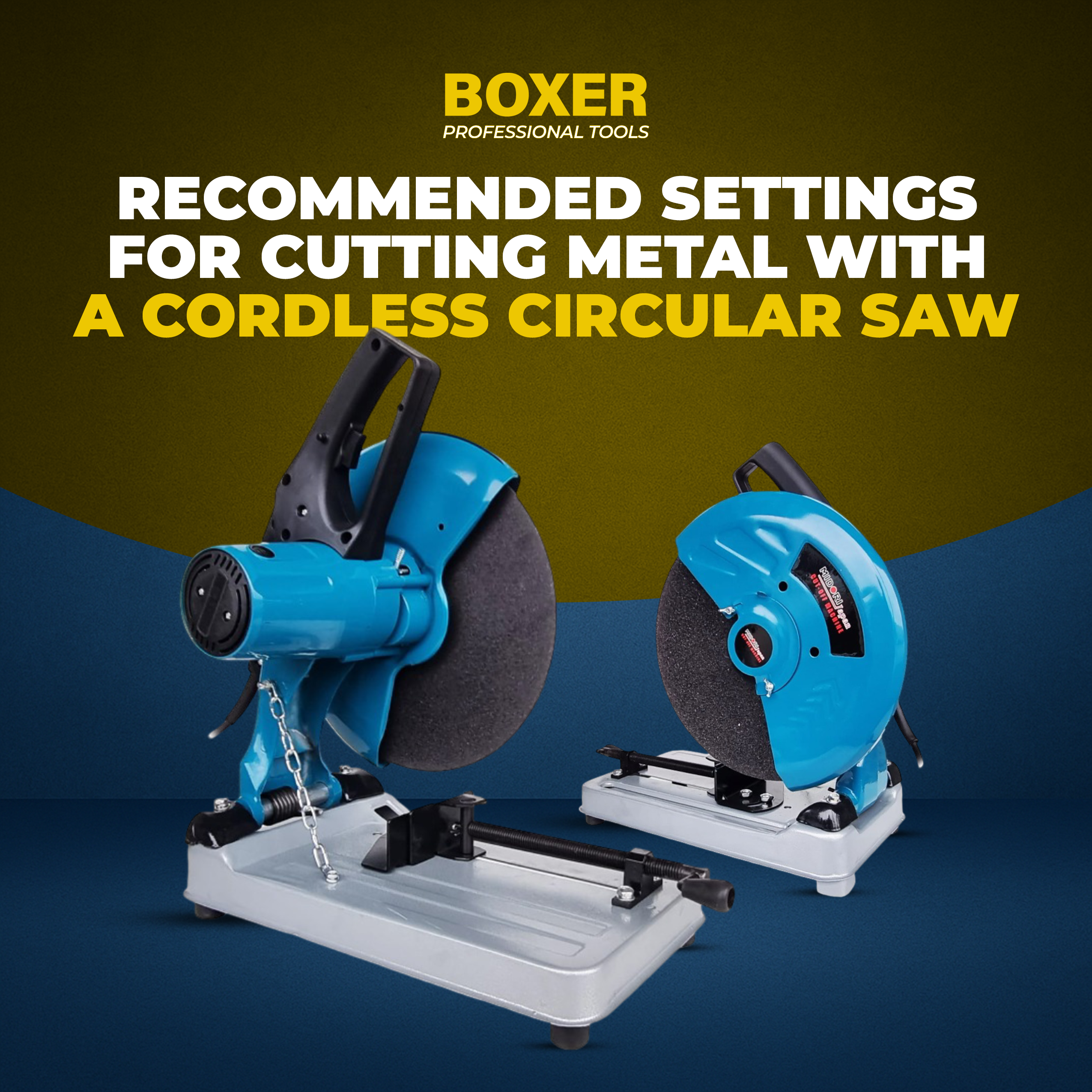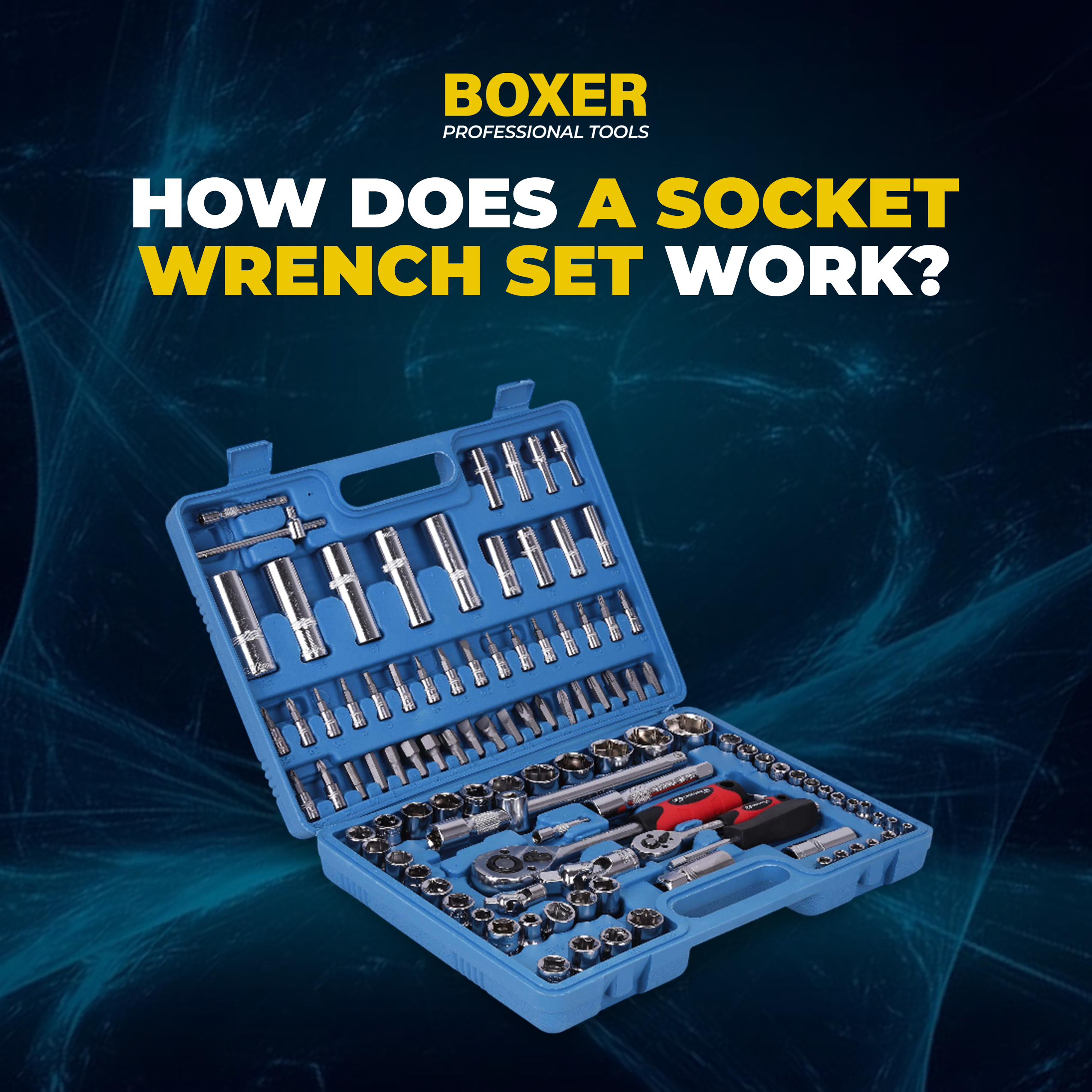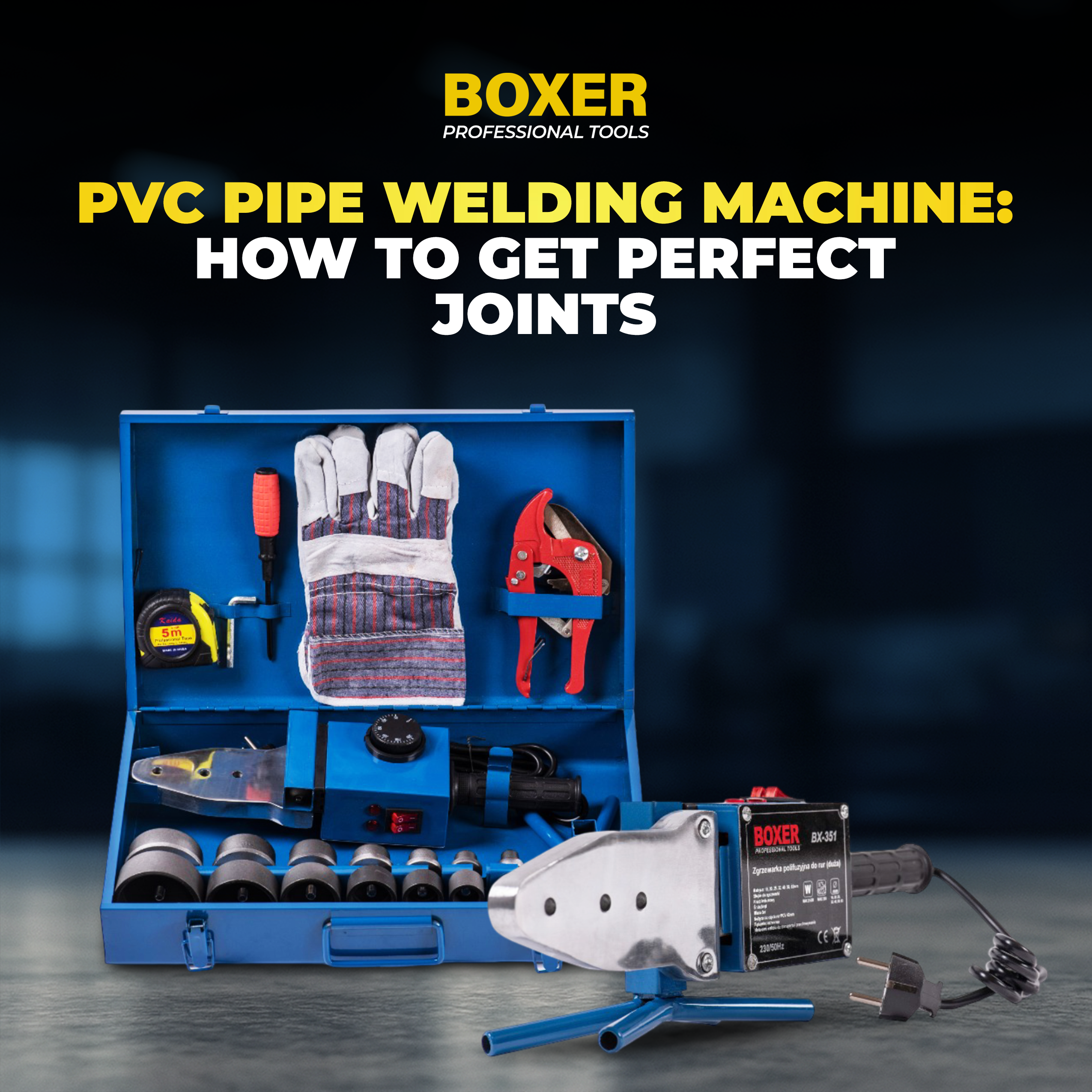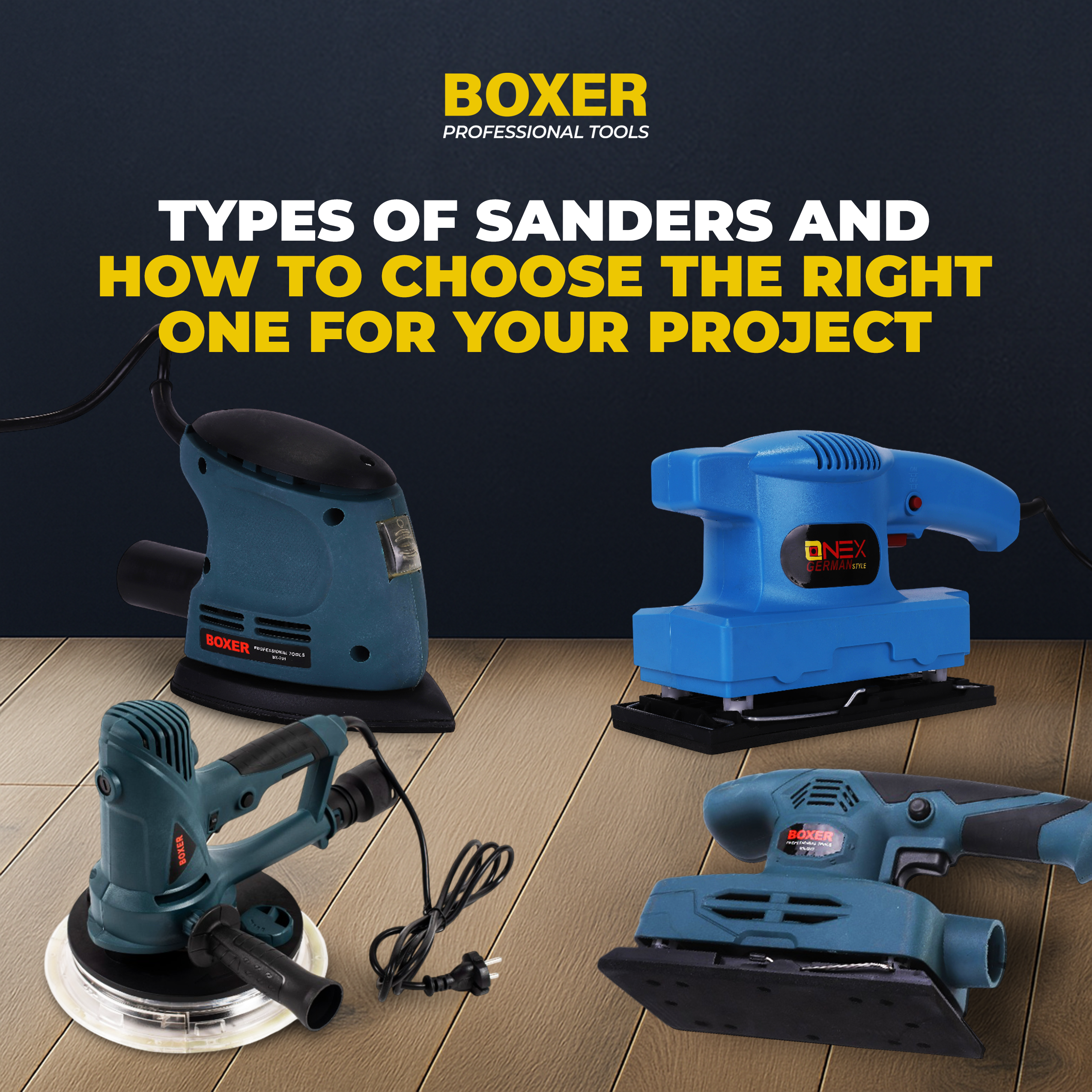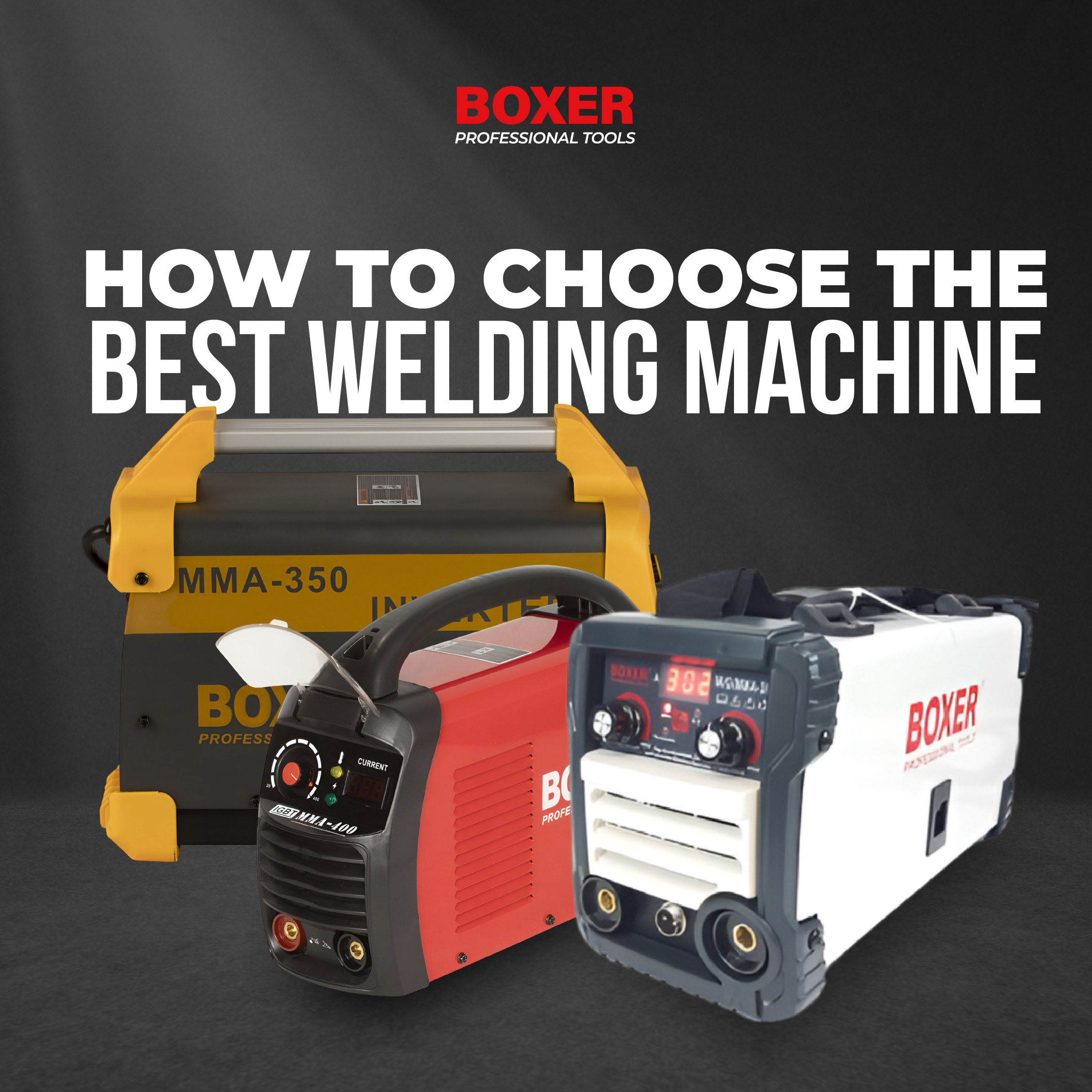
How to Choose the Best Welding Machine
When it comes to welding, having the right equipment is crucial. Whether you're a seasoned professional or a DIY enthusiast, selecting the best welding machine can make a significant difference in your work quality and efficiency. This comprehensive guide will walk you through everything you need to know to make an informed decision and choose the best welding machine for your needs.
Understanding Welding and Its Importance
Welding is a process that joins materials, usually metals or thermoplastics, by using high heat to melt the parts together and allowing them to cool, causing fusion. It is a fundamental technique in various industries, including construction, automotive, aerospace, and manufacturing. The strength and durability of welded joints make welding an essential skill and process in modern fabrication and repair work.
What is a Welding Machine?
A welding machine is a vital tool used in the fabrication and construction industries to join metal parts together. By generating intense heat, welding machines melt metal workpieces, allowing them to fuse upon cooling, creating a strong and durable bond. These machines come in various types, such as MIG, TIG, and stick welders, each suited for different materials and applications. Whether building skyscrapers or repairing machinery, welding machines play a crucial role in ensuring structural integrity and precision in metalworking projects.
Types of Welding Machines
Before diving into the specifics of choosing the best welding machine, it's essential to understand the different types available. Each type of welding machine serves distinct purposes and is suited for various applications.
1. MIG Welders (Metal Inert Gas)
MIG welding, also known as Gas Metal Arc Welding (GMAW), is one of the most popular welding processes due to its ease of use and versatility. MIG welders use a continuous wire feed as an electrode and an inert gas to shield the weld from contamination.
Pros:
- Easy to learn and use, making it ideal for beginners.
- Suitable for welding thin to medium-thickness materials.
- High welding speed and productivity.
Cons:
- Requires a shielding gas, which can be cumbersome in outdoor or windy conditions.
- Limited penetration compared to other welding methods.
2. TIG Welders (Tungsten Inert Gas)
TIG welding, or Gas Tungsten Arc Welding (GTAW), uses a non-consumable tungsten electrode to produce the weld. An inert gas, typically argon, is used to protect the weld area from contamination.
Pros:
- Provides precise and high-quality welds.
- Suitable for welding thin materials.
- Excellent control over the welding process.
Cons:
- Requires more skill and experience.
- Slower welding speed compared to MIG welding.
3. Stick Welders (Shielded Metal Arc Welding)
Stick welding, or Shielded Metal Arc Welding (SMAW), is a manual welding process that uses a consumable electrode coated in flux. The flux creates a gas shield around the weld pool, protecting it from contamination.
Pros:
- Versatile and suitable for welding thicker materials.
- Effective in outdoor and windy conditions.
- Minimal equipment required.
Cons:
- Produces more spatter and slag, requiring cleanup.
- Requires more skill to achieve clean, high-quality welds.
4. Flux-Cored Arc Welders (FCAW)
Flux-cored arc welding is similar to MIG welding but uses a special tubular wire filled with flux. This eliminates the need for an external shielding gas.
Pros:
- Suitable for outdoor and windy conditions.
- High welding speed and productivity.
- Effective for thicker materials.
Cons:
- Produces more spatter compared to MIG welding.
- Requires additional cleanup.
5. Multi-Process Welders
Multi-process welders combine multiple welding processes into a single machine, allowing users to switch between MIG, TIG, and stick welding as needed.
Pros:
- Versatile and convenient for various applications.
- Cost-effective solution for those needing multiple welding capabilities.
Cons:
- May be more expensive than single-process welders.
- Compromise on performance for each individual welding process.
Key Factors to Consider When Choosing the Best Welding Machine
Now that you have a basic understanding of the different types of welding machines, let's delve into the key factors to consider when selecting the best welding machine for your needs.
1. Application and Material Type
The first and foremost consideration is the type of work you'll be doing and the materials you'll be welding. Different welding machines are suited for different applications:
- MIG Welders: Ideal for automotive repairs, fabrication, and general maintenance.
- TIG Welders: Best for precision work, such as welding thin materials, stainless steel, and aluminum.
- Stick Welders: Suitable for heavy-duty applications, construction, and outdoor projects.
- Flux-Cored Arc Welders: Great for outdoor welding and thicker materials.
- Multi-Process Welders: Versatile option for those who need to switch between different welding processes.
2. Power Requirements
Welding machines come in various power options, typically categorized by their input voltage and output amperage. The power requirements will depend on the type of materials you'll be welding and the thickness of those materials.
- 120V Machines: Suitable for light-duty work and thin materials. Ideal for home use and small projects.
- 240V Machines: Suitable for heavier-duty work and thicker materials. Commonly used in industrial and professional settings.
- Multi-Voltage Machines: Offer flexibility to switch between different power inputs, making them versatile for various applications.
3. Duty Cycle
The duty cycle of a welding machine refers to the amount of time it can operate continuously before needing to cool down. It is typically expressed as a percentage of a 10-minute period. For example, a 60% duty cycle at 200 amps means the machine can weld for 6 minutes at 200 amps before requiring a 4-minute cool-down period.
- High Duty Cycle: Necessary for heavy-duty and industrial applications where prolonged welding is required.
- Low Duty Cycle: Suitable for light-duty work and occasional welding.
4. Portability
Portability is an essential factor, especially if you'll be moving the welding machine between job sites or around your workshop. Consider the weight, size, and design of the machine:
- Lightweight and Compact: Ideal for home use and small projects.
- Heavy and Robust: Suitable for industrial settings and stationary use.
5. Ease of Use
The ease of use is particularly important for beginners and hobbyists. Look for features such as:
- User-Friendly Controls: Clear and intuitive controls for easy adjustments.
- Automatic Settings: Some machines offer automatic adjustments for voltage and wire feed speed, simplifying the welding process.
- Comprehensive Manuals and Tutorials: Availability of detailed guides and instructional materials.
6. Additional Features
Modern welding machines come with various additional features that enhance their functionality and convenience:
- Digital Displays: Provide accurate readings of voltage, amperage, and other settings.
- Adjustable Settings: Allow fine-tuning of welding parameters for different materials and applications.
- Built-in Safety Features: Include thermal overload protection, voltage fluctuation protection, and more.
7. Budget
Your budget will play a significant role in determining the best welding machine for you. While it's tempting to go for the cheapest option, investing in a quality machine can save you money in the long run by providing better performance and durability.
- Entry-Level Machines: Suitable for beginners and hobbyists with basic welding needs.
- Mid-Range Machines: Offer a balance of performance and affordability, ideal for more frequent use and varied applications.
- High-End Machines: Provide advanced features and superior performance, suitable for professionals and industrial use.
Top Recommended brands for the Best Welding Machines
Based on the factors discussed above, here are some top recommendations for the best welding machines in various categories:
Best Professional Welding Machine: Boxer Tools Professional MIG/MAG/FLUX/LIFT-TIG Inverter
The Boxer Tools Professional MIG/MAG/FLUX/LIFT-TIG Inverter welding machine is a top-tier welding machine that incorporates advanced inverter technology for superior results. It is designed for professional use and offers a wide range of welding methods, making it incredibly versatile.
Key Features:
- Inverter Technology: Ensures low weight and high-quality results.
- Variable Polarity: Suitable for basic electrodes.
- Fan Cooling: Combined with inverter technology guarantees electrode welding without overheating and downtime.
- Power Supply: 230V ±15%.
- Maximum Welding Current: 300A – 11.5 KVA.
- Duty Cycle: 60% at 200A – 24V – 40°C.
- Net Weight: 10 kg.
- Dimensions: 400300200 mm.
- Wire Diameter: 0.6/0.8/0.9/1.0/1.2 mm.
- Max Wire Ring Diameter: Up to 200 mm.
- Rated Max Current: I1max 55A.
- Effective Current: I1eff 25.5A.
- Power Factor: 0.93.
- Standard: IEC 60974-1.
Best MIG Welder: Hobart Handler 210 MVP
The Hobart Handler 210 MVP is a versatile and reliable MIG welder that offers excellent performance for both beginners and experienced welders. With dual voltage capability (120V/240V), it can handle a wide range of materials and thicknesses.
Key Features:
- Dual voltage capability (120V/240V)
- 210 amps of power
- Spool gun ready for aluminum welding
- User-friendly controls and setup
Best TIG Welder: AHP AlphaTIG 200X
The AHP AlphaTIG 200X is a high-quality TIG welder that provides precise control and exceptional performance. It's suitable for welding thin materials, stainless steel, and aluminum, making it a favorite among professionals.
Key Features:
- Dual voltage capability (120V/240V)
- 200 amps of power
- Advanced inverter technology for smooth welding
- Adjustable pulse frequency and AC balance control
Best Stick Welder: Lincoln Electric K1170
The Lincoln Electric K1170 is a robust and reliable stick welder that is perfect for heavy-duty applications and outdoor projects. Its durable construction and high power output make it a popular choice among professionals.
Key Features:
- 225 amps of power
- Versatile for welding various materials
- Durable and rugged design
- Easy to use and maintain
Best Flux-Cored Arc Welder: Forney Easy Weld 261
The Forney Easy Weld 261 is a compact and affordable flux-cored arc welder that is perfect for beginners and hobbyists. Its lightweight design and ease of use make it an excellent choice for home projects and small repairs.
Key Features:
- 140 amps of power
- Lightweight and portable
- Easy to use with intuitive controls
- Suitable for outdoor welding
Best Multi-Process Welder: Everlast PowerMTS 251Si
The Everlast PowerMTS 251Si is a versatile multi-process welder that combines MIG, TIG, and stick welding capabilities in a single machine. It offers excellent performance and flexibility for various welding applications.
Key Features:
- Dual voltage capability (120V/240V)
- 250 amps of power
- Digital display and adjustable settings
- Multiple welding processes in one machine
Tips for Maintaining Your Welding Machine
Once you've chosen the best welding machine for your needs, proper maintenance is essential to ensure its longevity and optimal performance. Here are some tips to keep your welding machine in top condition:
1. Regular Cleaning
Keep your welding machine clean and free from dust, dirt, and debris. Regularly clean the exterior and check for any buildup around the vents and cooling fans.
2. Inspect Cables and Connections
Regularly inspect the welding cables, connections, and hoses for any signs of wear or damage. Replace any worn-out or damaged parts promptly to prevent performance issues and ensure safety.
3. Check Consumables
Check the consumables, such as electrodes, contact tips, and nozzles, regularly. Replace them as needed to maintain consistent weld quality and prevent contamination.
4. Lubricate Moving Parts
Lubricate any moving parts, such as wire feed mechanisms and rollers, to ensure smooth operation. Follow the manufacturer's recommendations for the type of lubricant to use.
5. Monitor Duty Cycle
Pay attention to the duty cycle and avoid exceeding the recommended limits. Allow the machine to cool down properly between welding sessions to prevent overheating and damage.
6. Store Properly
When not in use, store your welding machine in a dry and clean environment. Protect it from moisture, dust, and extreme temperatures to prevent damage and corrosion.
Choosing the best welding machine involves careful consideration of various factors, including the type of work you'll be doing, the materials you'll be welding, and your budget. By understanding the different types of welding machines and their features, you can make an informed decision and select a machine that meets your specific needs.
Investing in a high-quality welding machine can significantly enhance your welding experience, improve the quality of your work, and increase your productivity. Whether you're a beginner or a professional, the right welding machine can make all the difference in achieving excellent results.
Remember to maintain your welding machine regularly to ensure its longevity and optimal performance. With the right equipment and proper care, you ca
Copyright © 2026 Boxertools | Powered By Orance Media Group


